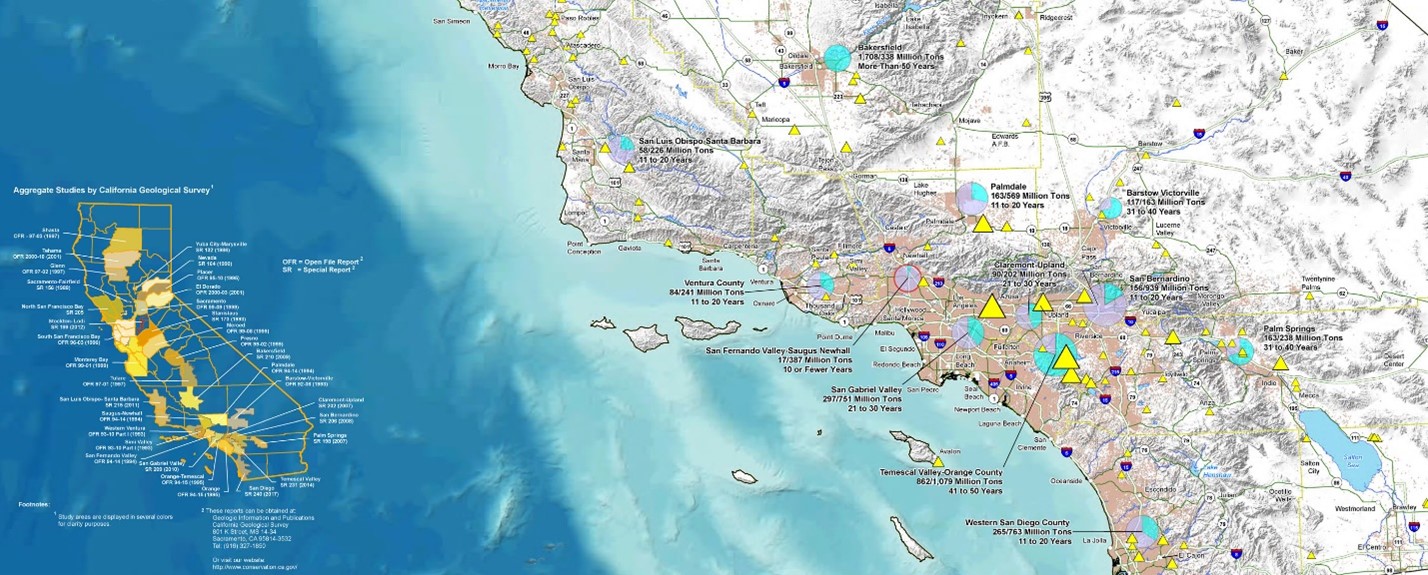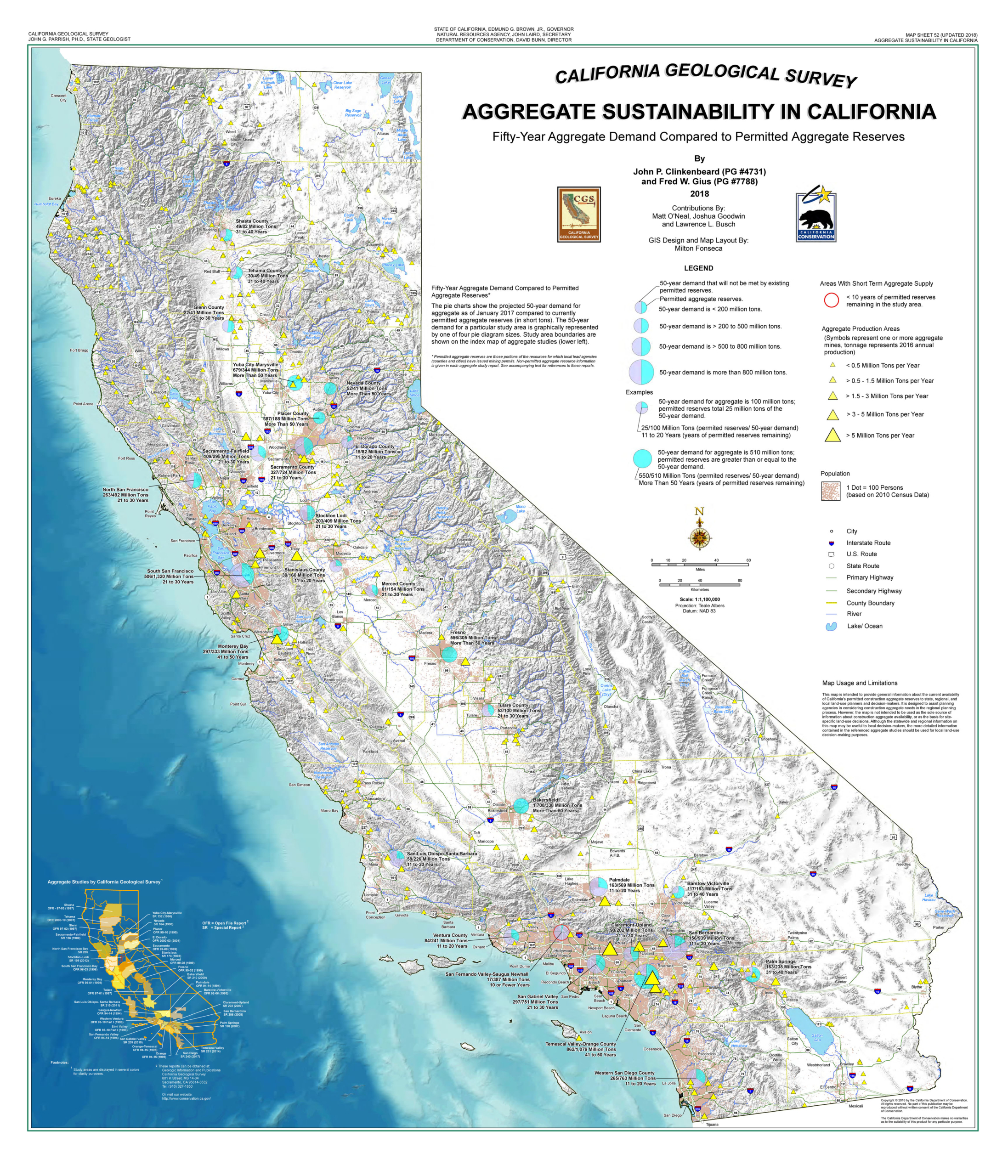John P. Clinkenbeard of the California Geological Survey office and Fred W. Gius of the California Department of Conservation dove deep in their 2018 study, “Aggregate Sustainability in California,” detailing their work in a 35-page report that covers reserves, demand forecasts, quality, pricing, transportation, and other key topics. Here is a brief introduction to this study, with links to the full report at the end.
Aggregate – sand, gravel and crushed stone – provides the bulk and strength to Portland Cement Concrete and is also used as road base, subbase, and fill. Aggregate normally provides 80% to 100% of the material volume in these uses.
The paving and building industries in California consume large quantities of aggregate and future demand is expected to increase. Over the next 50 years, the state will need approximately 11 billion tons of aggregate. As a low unit-value, high-bulk-weight commodity, it must be obtained from nearby sources to minimize economic and environmental costs associated with transportation. Transporting aggregate from distant sources results in increased construction costs, fuel consumption, greenhouse gas emissions, air pollution, traffic congestion, and road maintenance.
Let’s take a look at the scale of these impacts. From 1987 to 2016, California consumed an average of roughly 180 million tons of construction aggregate per year. Transporting it in 25-ton truckloads totals 7.2 million truck trips per year. With an average 50-mile, round-trip haul and return, that amounts to 360 million truck miles traveled, more than 51 million gallons of diesel fuel used, and more than 570,000 tons of carbon dioxide emission produced annually. If the haul distance is doubled to 100 miles, the numbers double to 720 million truck miles traveled, more than 102 million gallons of diesel fuel burned, and more than 1.1 million tons of carbon dioxide emissions produced.
Mining versus Carbon Dioxide Emissions
Land-use planners and decision makers in California are faced with balancing a wide variety of needs in planning for a sustainable future. Mining is often seen as a controversial land use during the permitting process. However, there are benefits to having local sources of construction aggregate.
Universal need, increasing demand, the economic and environmental costs of transportation, and multiple land-use pressures – these all compound to make information about the availability and demand for aggregate all the more valuable to land-use planners and decision makers charged with planning for a sustainable future for California’s citizens.
To read the entire study, “Aggregate Sustainability in California,” click here. https://www.conservation.ca.gov/cgs/Documents/Publications/Map-Sheets/MS_052_California_Aggregates_Report_201807.pdf
To view the California Geological Survey Aggregate Map of California, click here. https://www.conservation.ca.gov/cgs/Documents/Publications/Map-Sheets/MS_052_California_Aggregates_Map_201807.pdf


